12 Wacky Christmas Traditions in Europe
Although they share a continent, European countries and regions take pride in their own specific Christmas customs. To compile this list of unusual holiday celebrations, I asked travel writers from around the globe to share their favorites. From a gift pooping log in Spain to the golden pig of the Czech Republic, let’s explore 12 wacky Christmas traditions in Europe.
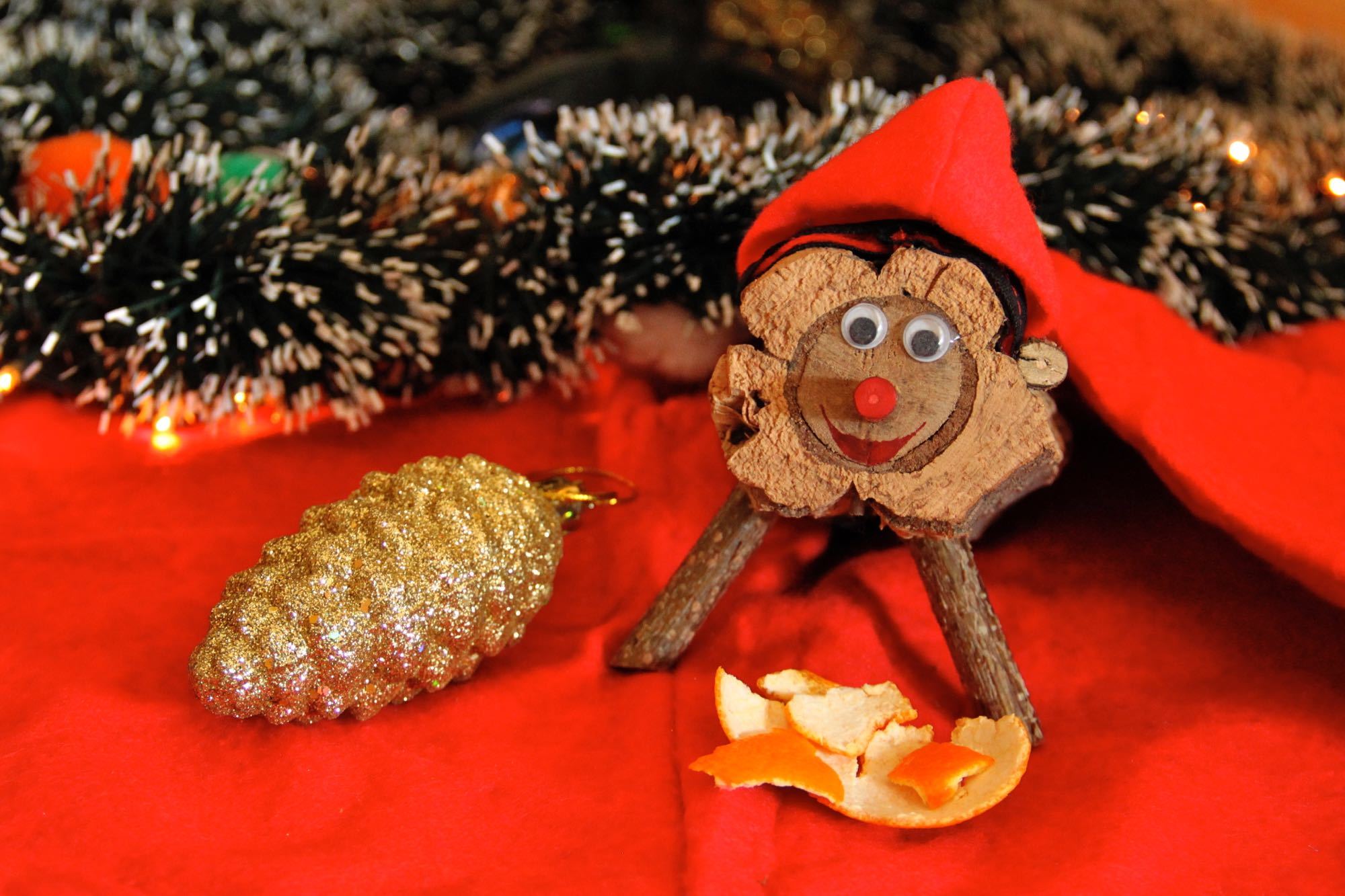
This website sometimes receives compensation, hosted travel, or products related to blog posts. This article may include affiliate links at no extra cost to consumers. As an Amazon Associate, I earn money from qualifying purchases.
1. The Gift Pooping Log from Catalonia, Spain
Children all over the northeastern region of Spain in Catalonia cherish the tió de nadal, or caga tió. He’s a smiling log that poops presents every year on Christmas Eve.
The scatological tradition goes like this: Starting on December 8th, families bring out the pooping log and place him in the living room. He has a happy face that’s painted on him and has two front sticks as legs. He also wears a barretina (a red Catalan hat).
Every evening after dinner, children leave clementine and orange peels, candy, nougats, and other foods near him. They also place a blanket on him, so he doesn’t catch a cold at night.
The tió eats the food overnight when no one is watching and magically gobbles it up by morning! On Christmas Eve, the log is ready to defecate presents.
A parent covers him with a blanket, and the kids sing traditional caga tió Christmas carols. While they do this, they hit him with a stick to help him poop. Then, voila! They lift the blanket to find small presents that he excreted, like sweets or toys.
There are many stories of its origin, but one legend is that the pooping log started centuries ago in a rural area of Catalonia. The cold homes used logs to keep the chimneys running. As the log provided heat and light for the fireplace, the children took care of him. It’s unclear how a face showed up on him!
— Justine Ancheta, Latitude 41
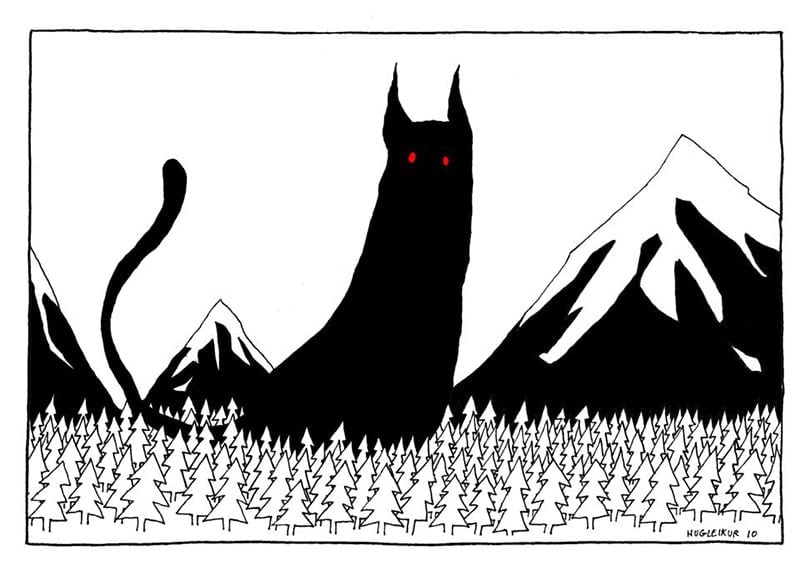
2. Scary Trolls and the Yule Cat in Iceland
Considering that the first time he met Santa Claus, my then 2-year-old son wailed his head off, he would not do well in Iceland. That’s because Icelandic Christmas traditions involve monsters.
First, you have Gryla, a troll/ogre combination who lives on a mountain with her sons. She’s on her third husband, having killed the first two husbands because they were boring. She likes to capture naughty children in her bag and boil them alive into her favorite stew.
Gryla has 13 sons, the Yule Lads, who visit Icelandic children during the 13 days in the run-up to Christmas. The Yule Lads leave well-behaved children candy and little toys in a shoe placed on the windowsill. The Yule Lads leave a rotten potato in the shoe if the child has been naughty.
The family pet is a giant black cat, Yule Cat, who is non-discriminatory in his tastes. He likes to eat both children and adults. Plus, he doesn’t even care if you’ve been naughty or nice. Yule Cat only gets to eat once per year, so perhaps his impartial appetite is due to hunger.
The only way to avoid being a Yule Cat meal is to get a new piece of clothing at Christmas. (No more whines from the kiddies when that gift is a sweater instead of a toy!)
— Shobha George, The Expat Travel Mama
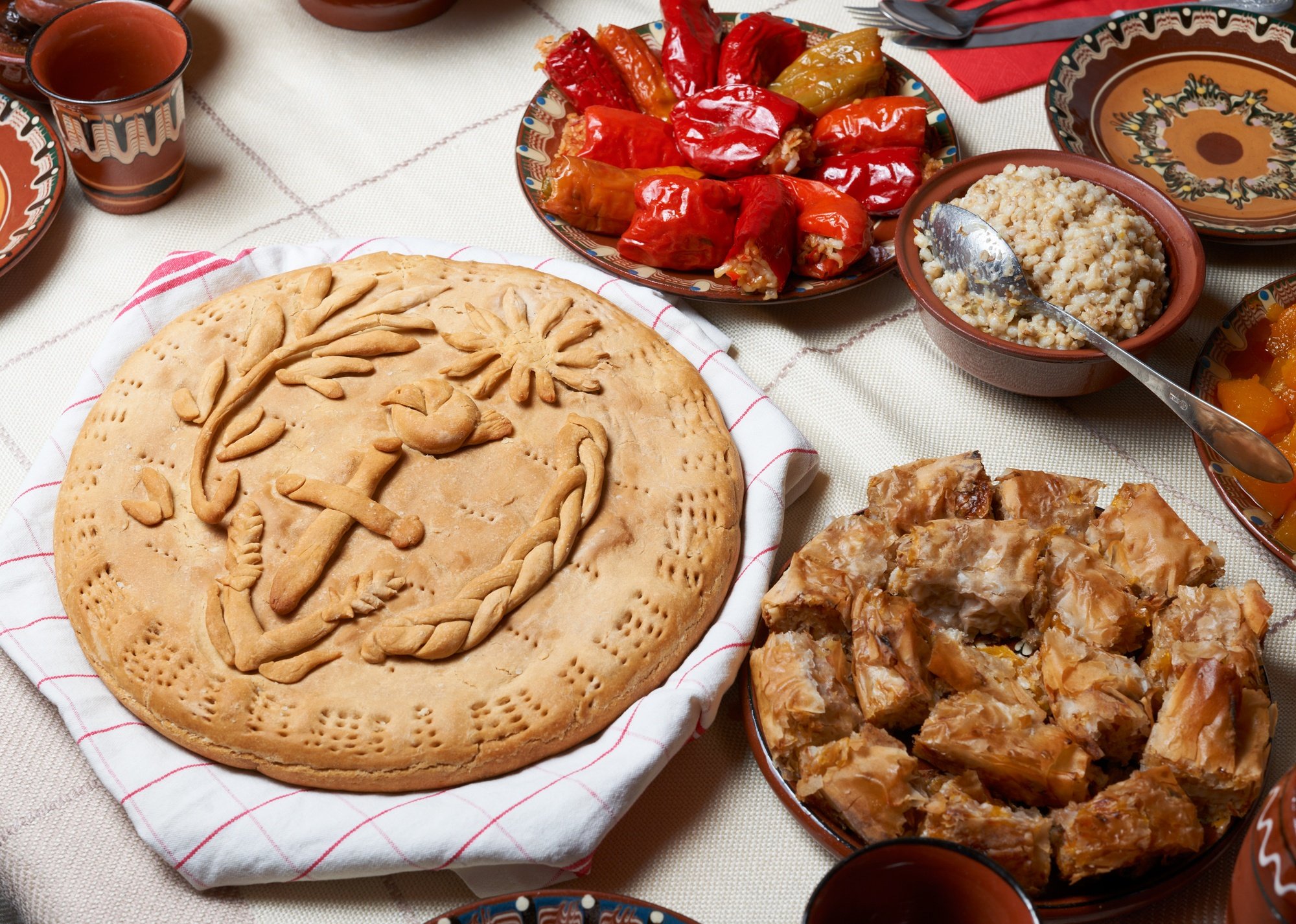
3. Christmas Pigs and Carolers in Bulgaria
Christmas traditions in Bulgaria are an intriguing combination of pagan rituals and Orthodox Christian customs. In this European country, Christmas Eve is actually more important than Christmas Day itself.
The large meal on Christmas Eve is always vegetarian and must consist of an uneven number of dishes – 7, 9 or 11. December 24th is also when you crack a walnut open to predict how good or bad the next year will treat you.
Originally, there were no Christmas presents on December 25th and there was no Santa Claus in Bulgaria. Instead, on Christmas Day pigs were slaughtered.
In Orthodox Christianity, the 40 days before Christmas are a period of fasting, hence the vegetarian Christmas Eve meal, and then on Christmas Day meat could be finally eaten. So, pig slaughtering became a ritual in itself, and in some places, it would last up to three days.
Finally, on Christmas Day there are the traditional carol singers called Koledari. These groups of men go from house to house to sing and dance. They wish for well-being, health, and prosperity, and chase the bad spirits away. In exchange, they are given ritual breads and ring-shaped buns.
Today, although Santa Claus also makes a detour to Bulgaria, most of these Christmas celebrations are still alive and practiced, except perhaps for the pig-slaughtering one, which is fading away and can be found only in villages.
— Daniela Koleva, IpanemaTravels.com
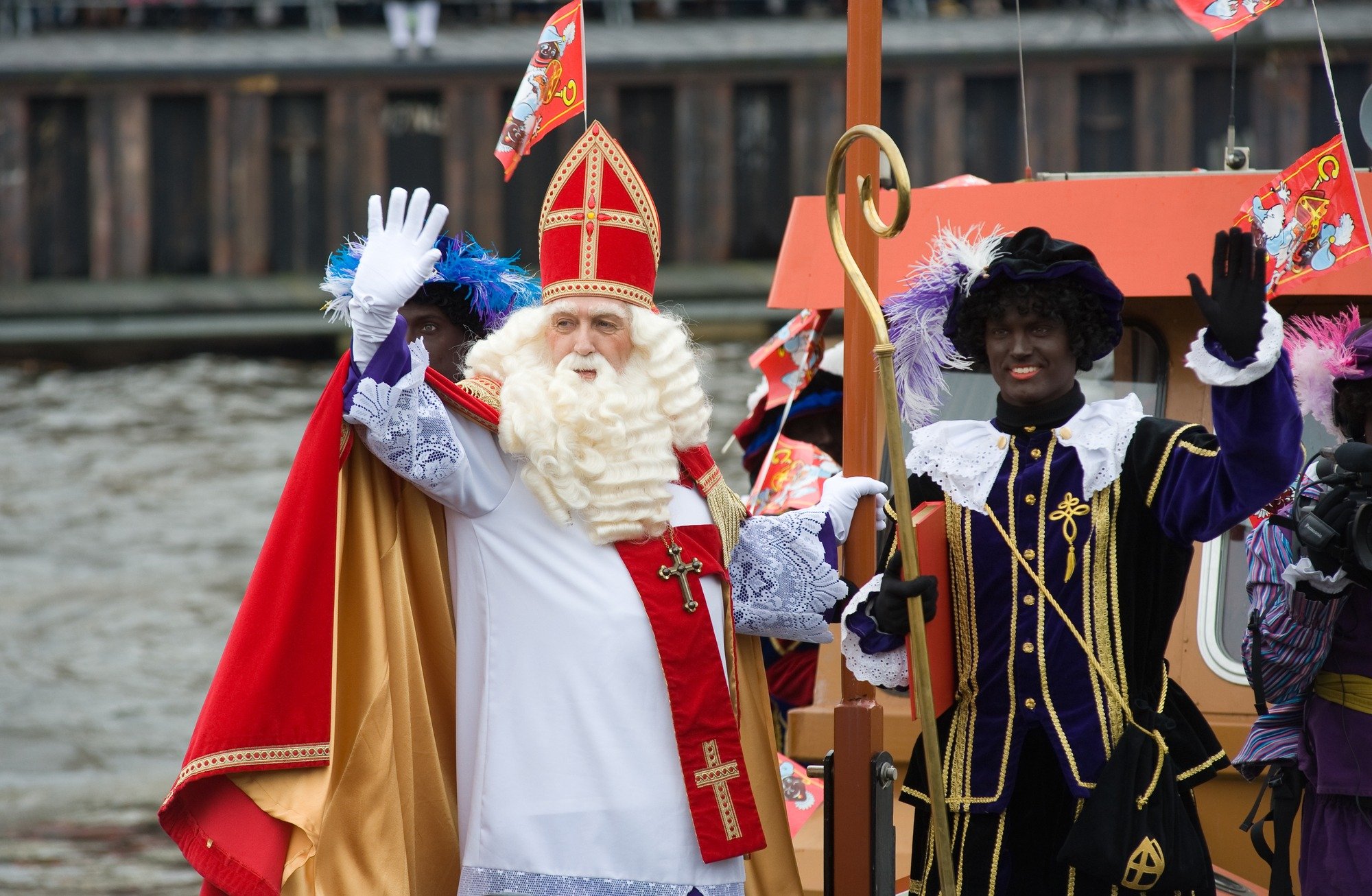
4. Sinterklaas and the Black Peters in the Netherlands
The Christmas season begins in the Netherlands with the arrival of Sinterklaas in November every year. Sinterklaas and his companions (known as Black Peters) sail into one of the Dutch ports from Spain, where they live the rest of the year. Sinterklaas is an older gentleman in a bishop’s clothing who rides a white horse.
The Black Peters are supposed to be Moors from Spain and have traditionally donned blackface. Needless to say, the racist implications have caused a lot of controversy in the Netherlands in recent years.
The Dutch have been resistant to changing their beloved tradition, though. They insist the Black Peters are dark because they got stuck in the chimney for a long time.
When Sinterklaas is in town, the children leave a shoe out at bedtime in the hopes of getting a small gift. Naughty children get a lump of coal in their shoes instead.
Sinterklaas fun culminates on December 5, when he drops off gifts for each child before he heads back to Spain.
— Shobha George, Just Go Places Blog
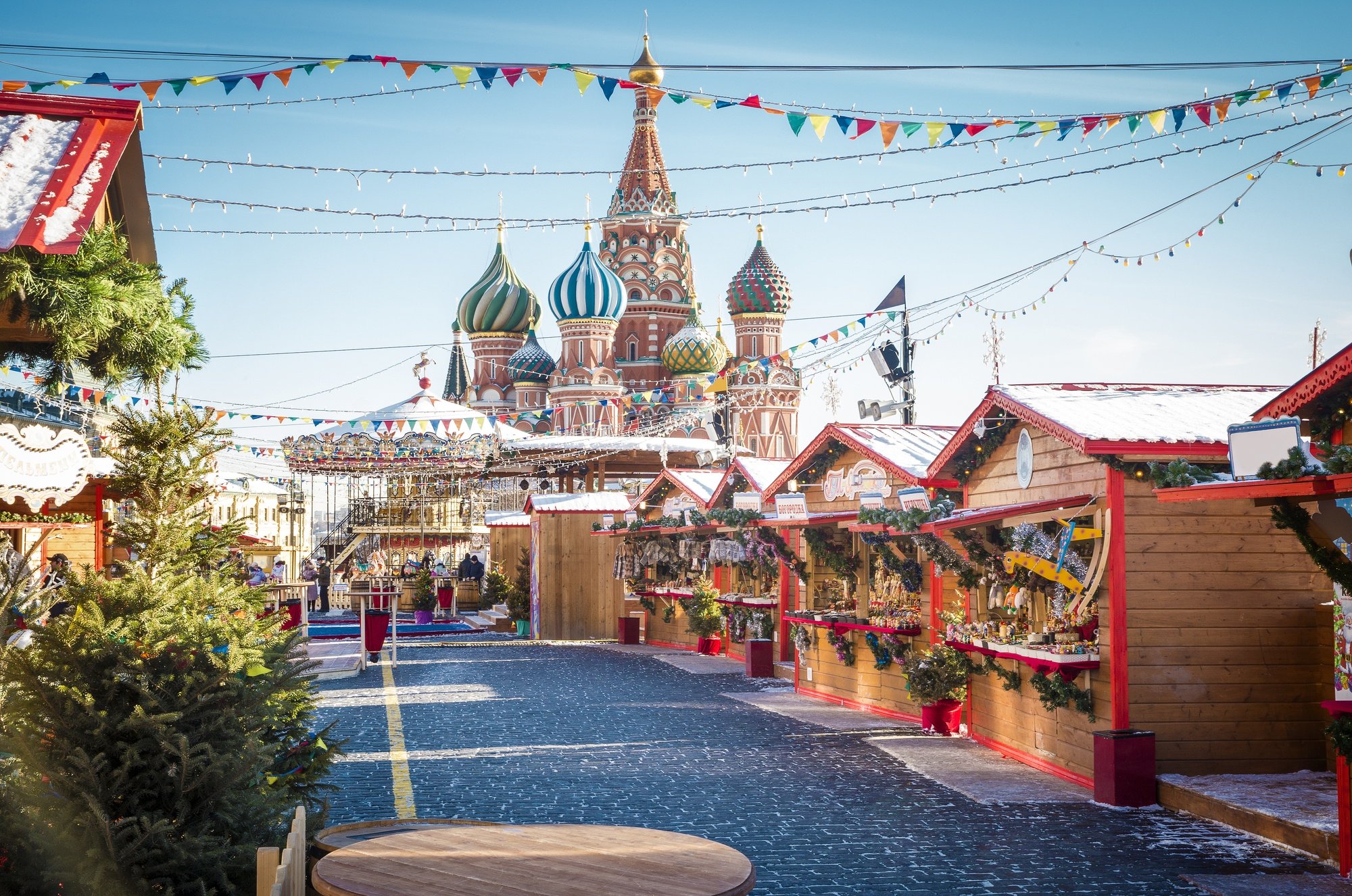
5. Christmas Fortune Tellers in Russia
Fortune telling is an interesting tradition that is done in Russia during the holiday season. Russian Orthodox Epiphany is considered the best time of the year to predict the future. It takes place from January 6th (Christmas Eve for Orthodox Christians) through January 19.
It is most common for younger girls to get together and perform these predictions. They usually are trying to discover what is in store for them during the New Year. They also seek answers to questions about their more distant futures, such as when they will get married or if they will get back together with their boyfriends.
These fortunes can be predicted in a variety of ways – from interpreting newspaper ashes to using mirrors and candles and burning threads! In recent times, most girls do this in their homes. But Russian banyas (or saunas) were where these predictions took place in the past.
— Lindsey Puls, Have Clothes, Will Travel
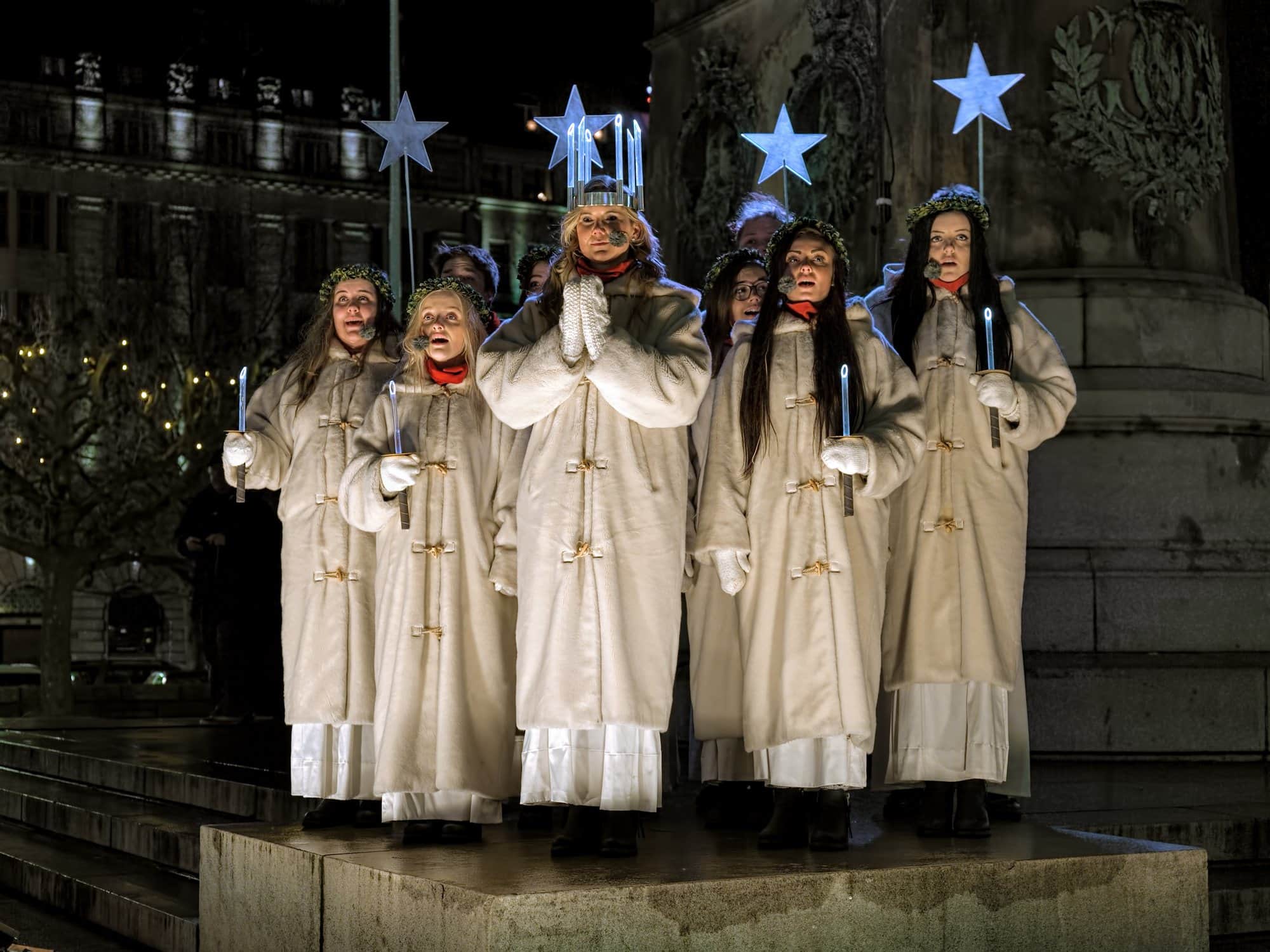
6. St. Lucy’s Day in Sweden
Every December 13, Sweden celebrates St. Lucy’s Day. This holiday is based on stories told by the early missionaries who brought Christianity to the country.
St. Lucy was a Christian girl who was martyred in the 4th century for bringing food to Christians who were hiding from persecution in Roman catacombs. She wore candles on her head in order to keep her hands free to hold the food.
Every year Sweden picks a girl to be the national St. Lucy. Local towns and villages also pick their own St. Lucys. The competition is fierce.
The Lucys dress in white gowns and wear crowns of white candles on their head. Traditionally, the crowns are made of lingonberries and hold lit candles. Little boys join in the tradition by wearing white gowns and holding a star on a stick to be Star Boys.
The Lucys visit hospitals and old people. Then they hand out gingersnap biscuits and sweet raisin buns shaped like St. Lucia’s cats (lussekatter).
If you would like to try your hand at making gingersnap biscuits or the raisin buns, then the official website for the country of Sweden has recipes for both.
— Shobha George, Just Go Places Blog
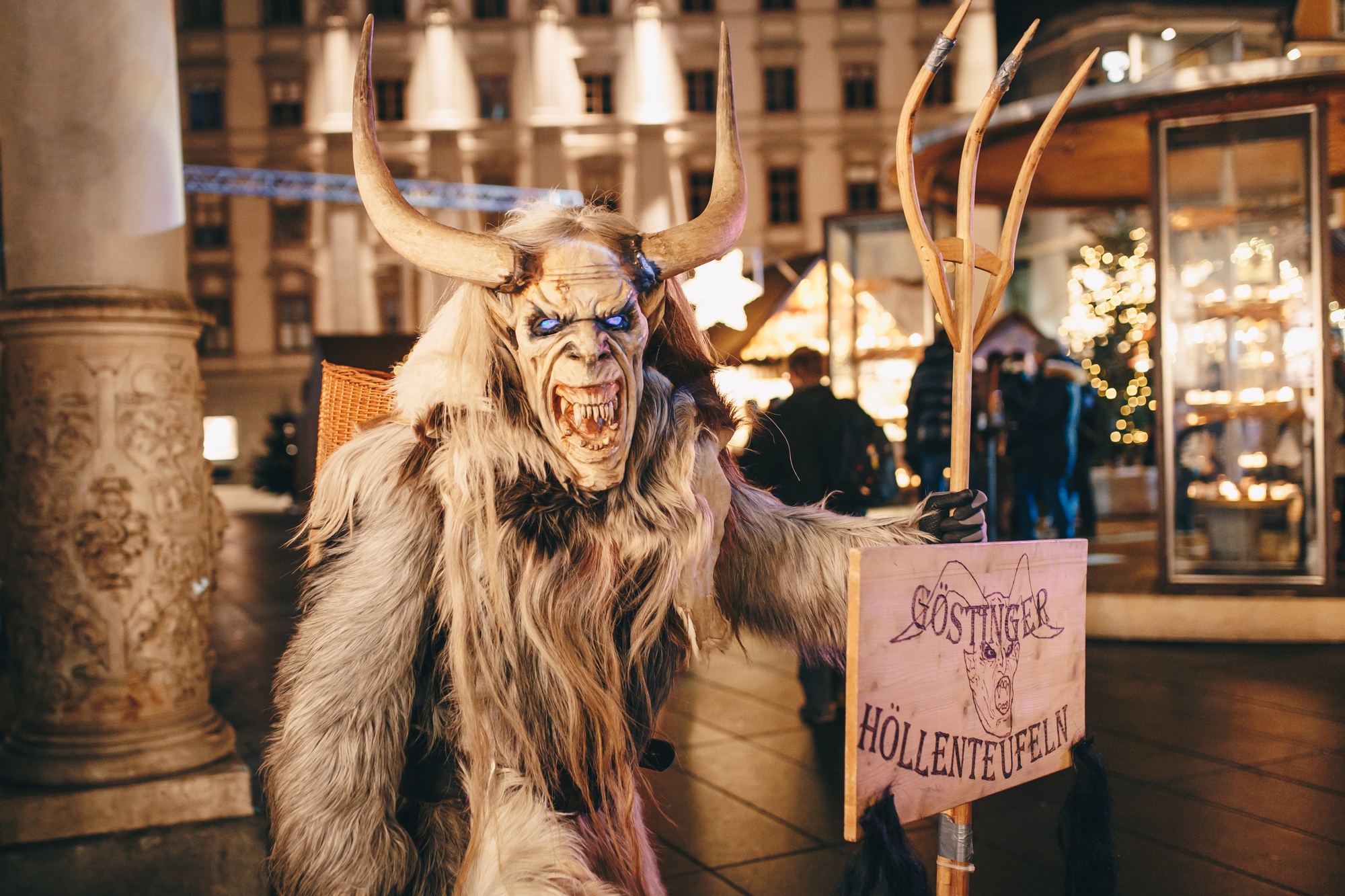
7. Krampus the Christmas Devil in Austria and Germany
Growing up as a kid celebrating Christmas in North Georgia, a lump of coal in your stocking from Santa was just about the worst threat imaginable around the holidays. But in Alpine Austria and Germany, where the dark Grimm fairy tales were born, there’s Krampus. Possibly the world’s weirdest Christmas tradition, Krampus is an insane devil bound in chains, with matted fur, stag horns, and flaming coals for eyes.
On December 5, the night before the Feast of St. Nicholas, Krampusnacht is celebrated. The half-goat, half-demon takes to the streets to punish naughty boys and girls for their misdeeds. Some versions suggest he’ll swat them with birch branches, while others involve a sack for taking them to Hell.
Though this creepy Christmas tradition is common in Central Europe, nobody’s certain where the Krampus concept originated. Some historians believe he’s a holdover from the Alpine region’s pagan past, which focused on winter solstice and was demonized by the Catholic Church.
If you see Krampus during your European travels, then it’s tradition to offer him some schnapps. It might not make him go away, but hopefully you’ll be spared a swat from his branch!
— Bret Love and Mary Gabbett, Blue Ridge Mountains Travel Guide
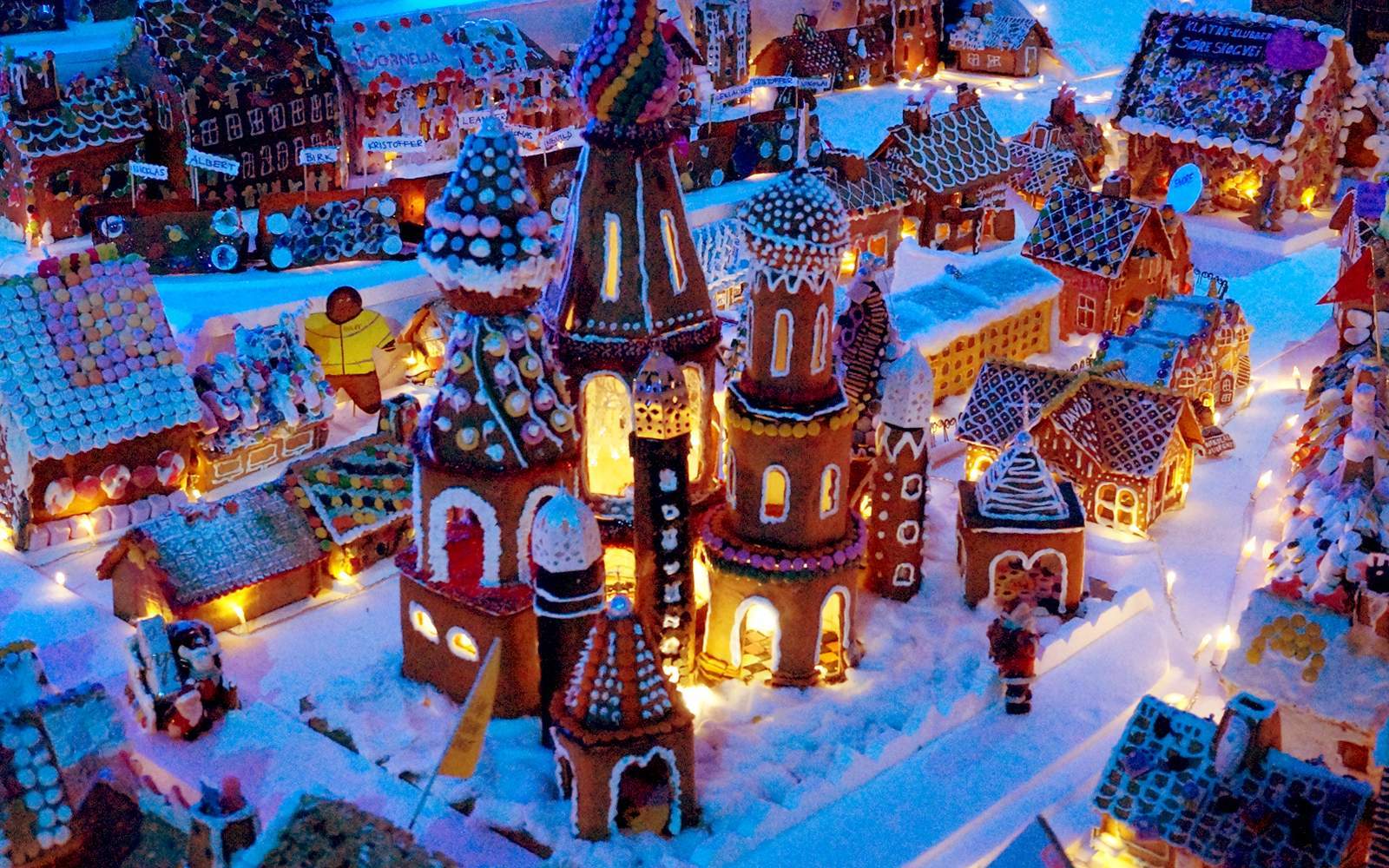
8. The Biggest Christmas Gingerbread Village in Norway
One of the coziest and most unique traditions in Europe is that of the Pepperkakebyen (gingerbread village) in Bergen, Norway. Visiting Bergen in winter may seem like an unlikely choice for many as the coastal city is known more for its rain than its snow.
But once you pop inside this magical gingerbread land, you will think you’re in the snowy, far north in a land far away from the Norwegian city center. Pepperkakebyen started in 1991 when local schoolchildren started constructing gingerbread houses resembling Bergen attractions, boats, cars, and even some iconic international landmarks.
It is the largest gingerbread city in the world these days and it takes place in Bergen from mid-November through the month of December annually. The profits made from Pepperkakebyen are all donated to a local charity for children in need.
— Megan Starr, MeganStarr.com
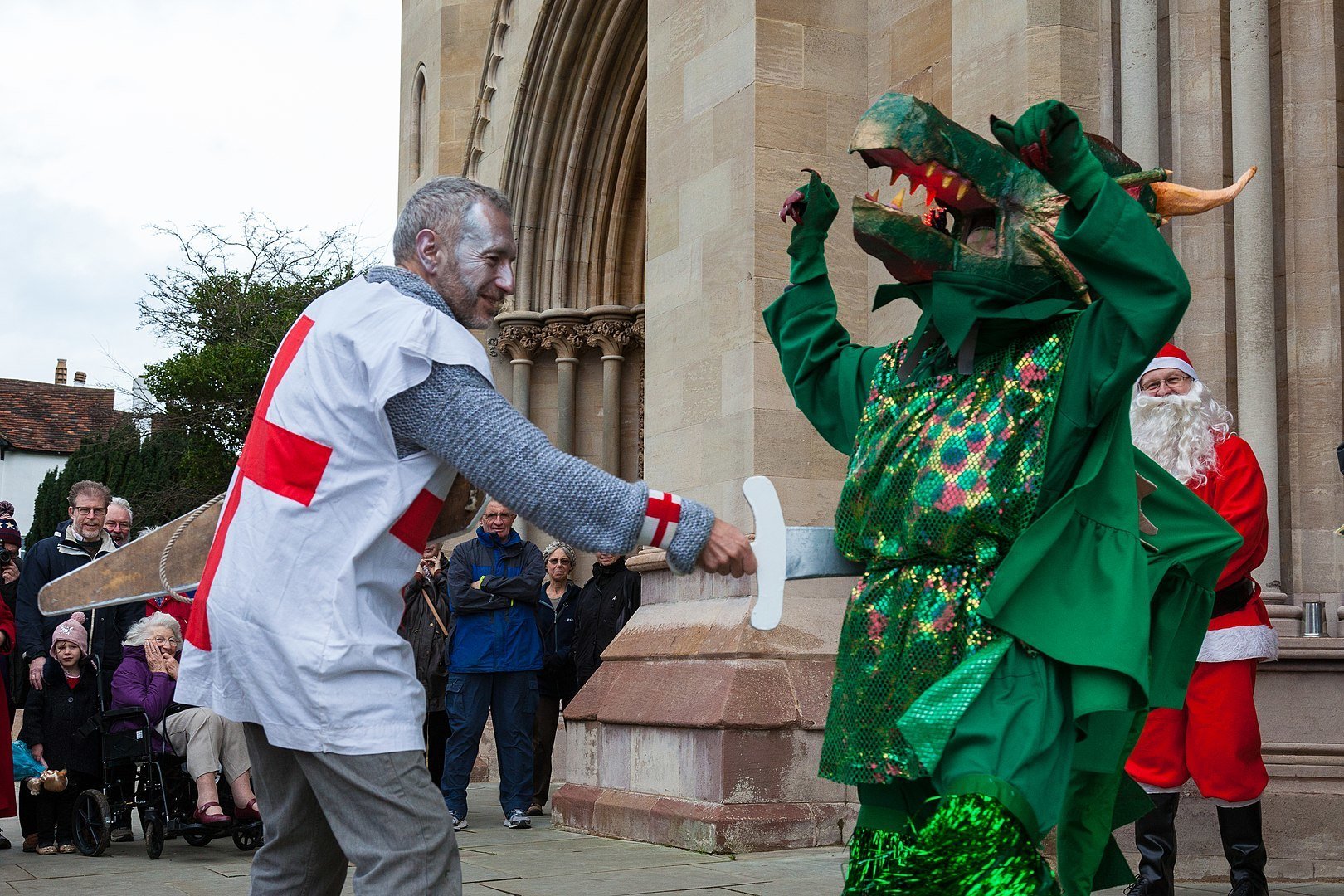
9. Mummers’ Holiday Plays in the United Kingdom
Mummers’ plays are dramatizations of folk tales held at Christmastime in many parts of the United Kingdom. This tradition started in the British Isles and spread to British colonies.
Traditional plays are performed by ordinary people rather than professional actors and are designed as a fun way to let off steam during the holidays.
There are several versions of mummering. The most common plot involves combat between two characters, usually Saint (or King) George and an evil character.
The evil one is killed but is then miraculously revived by a comic doctor character, bringing the play to an end. The character who is killed and is revived differs between plays but is often a dragon or a character called Turkey Sniper.
Other characters also get involved. They all have quite wonderful names: Clever Legs, the Old ‘Oss, Bold Granny, and Mazzant Binnit are just some. Plus, Father Christmas also almost always makes an appearance.
— Chris Young, EnglandExplore.com
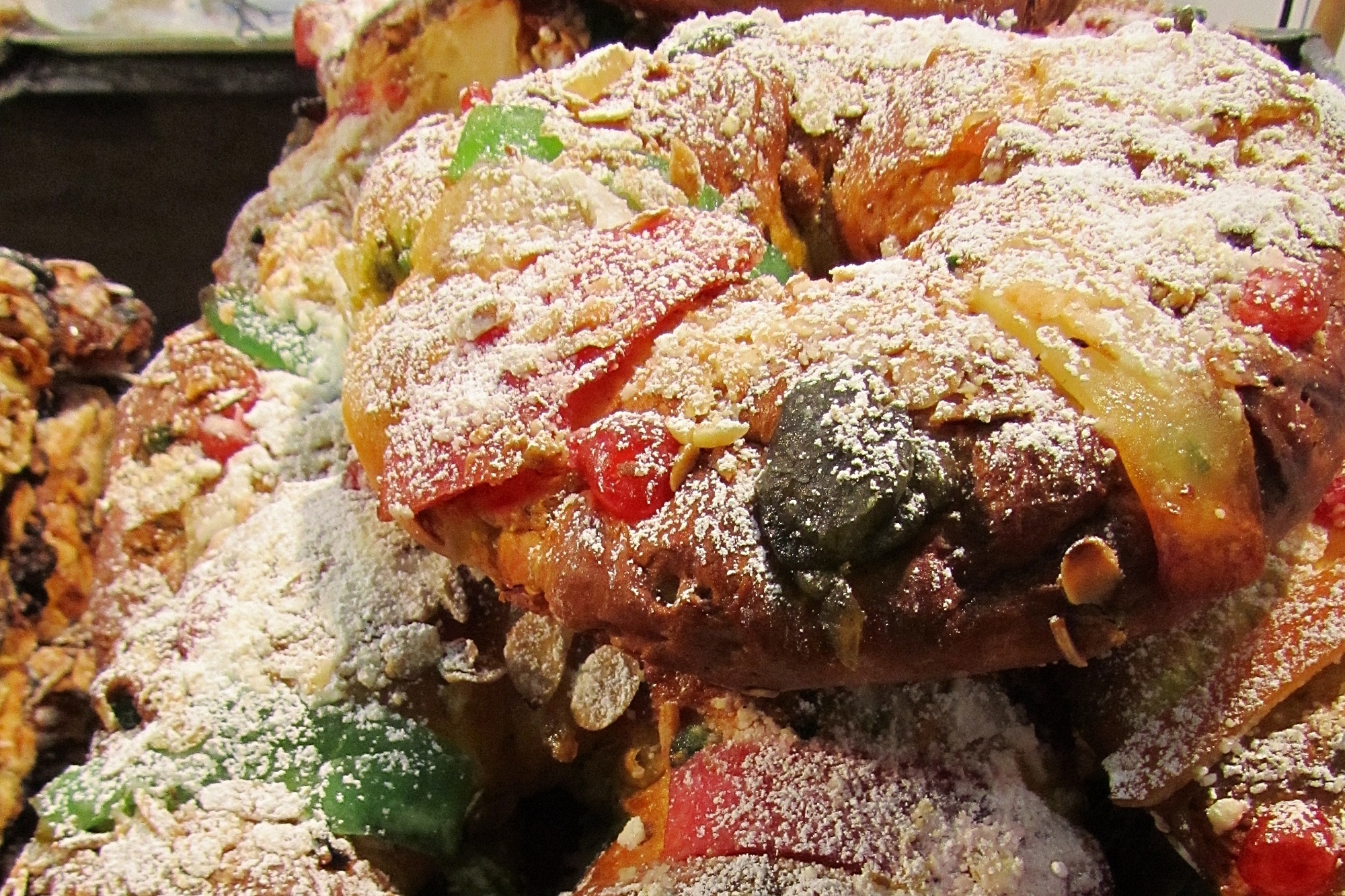
10. King’s Cakes in Portugal
Portugal’s traditional Christmas cake, Bolo-rei, or king’s cake, traditionally contained a couple of surprises. The cake itself is a doughy circle that is richly jeweled in brightly colored dried fruit.
King’s cake originated in the French courts of Louis XIV and became popular in Portugal in the mid-19th century. In keeping with French Christmas celebrations, a dried fava bean and a small toy would be baked into each Bolo-rei.
Whoever got the slice with the bean would be the king or queen for the day. This entitled the winner to a wish as well as the privilege of paying for next year’s cake. This custom has become a much-loved part of Portuguese Christmas traditions.
Although, over the years, the fava bean evolved into cats, good luck charms, and plastic toys. That is until the government banned the sale of cakes containing such non-food items. Homemade cakes, however, still contain the element of surprise.
— Julie Fox, Julie Dawn Fox in Portugal
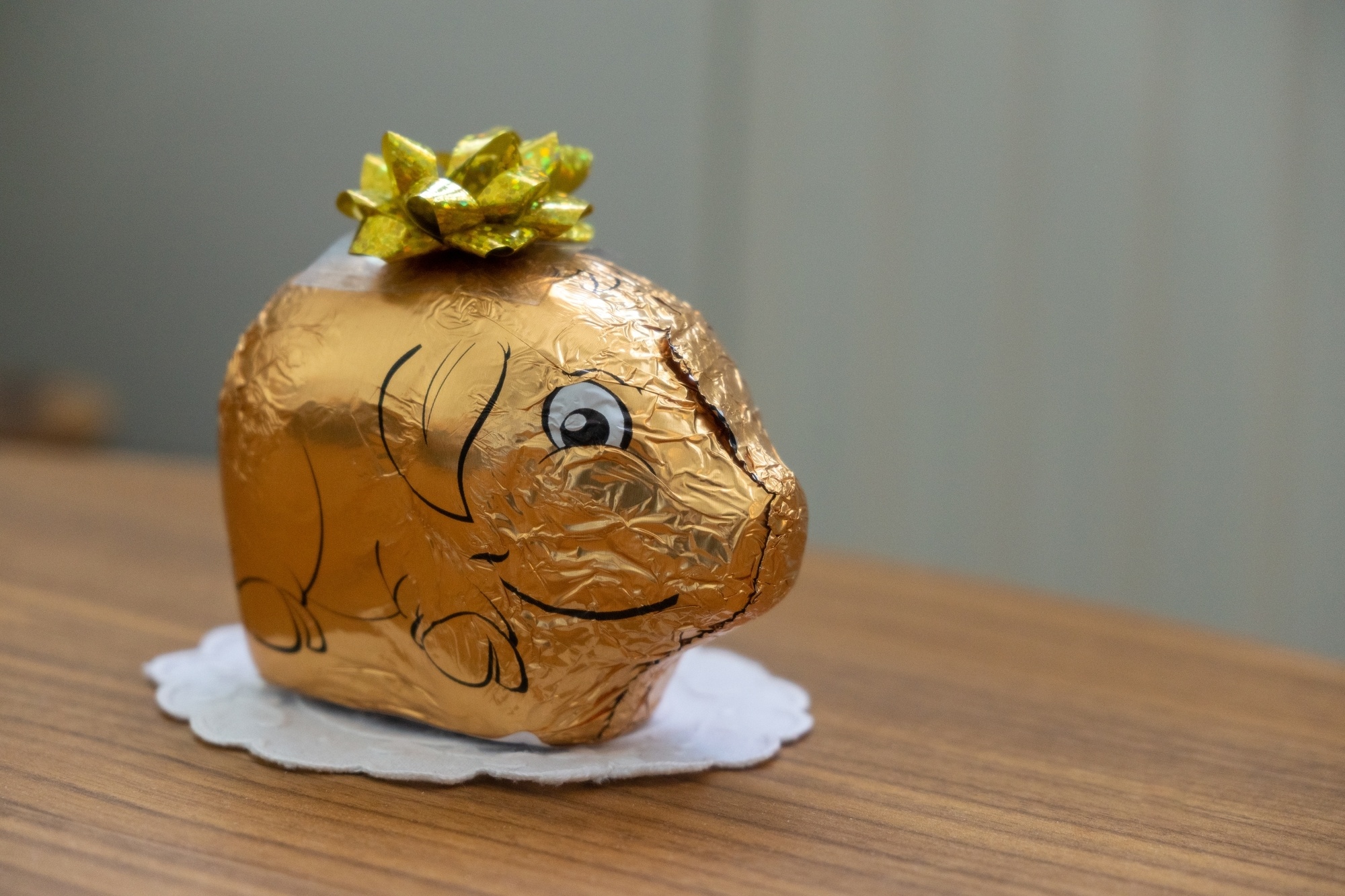
11. The Golden Pig of the Czech Republic and Slovakia
In the Czech Republic and Slovakia, the main time of year to celebrate Christmas is on the evening of December 24th. That’s when the whole family has a Christmas Eve dinner together, after which presents are unwrapped.
To keep eager children on a mission to eat their main Christmas meal, a fasting tradition developed. Essentially, everybody is supposed not to eat during the day on December 24 so as to have an appetite for the traditional Christmas dinner. This applies to meals only, as Christmas-themed pastries, such as the sweet braided bun called vánočka or Christmas cookies are allowed.
If the children manage to hold off eating, then they are promised to see a golden pig. It is said the golden pig tradition developed already in the Middle Ages when fasting would apply to meat meals only.
When I was a child growing up in the Czech Republic, I spent a great deal of time looking out the window, searching for the elusive golden pig. I even thought I saw it a few times.
Throughout the years, local confectioners caught up. You can now easily buy small pigs made of chocolate wrapped in golden tinfoil. Parents who still adhere to the tradition place the golden pig on a windowsill or anywhere it appears the pig came in from outdoors to reward good children.
— Veronika Primm, Travel Geekery

12. The Thirteen Christmas Desserts of Provence, France
Thirteen desserts may seem like a decadent and flamboyant feast, but to the people of Provence, it’s a tradition that has stood the test of time. First mentioned in print around a hundred years ago, it’s a Christmas custom that’s loved by many.
Each Christmas Eve, after attending midnight mass, three tablecloths are laid out bearing 13 desserts. These represent the Holy Trinity.
Everyone is expected to try a little of each dessert. But, in true French style, the offerings are small and delicate.
The 13 desserts aren’t strictly set, but typically include dried or candied fruits, fresh fruits such as clementines or apples, biscuits (cookies), nougat, and caramelized nuts. There’s also normally a Bûche de Noël (Yule log cake).
Every town in Provence adds its own specialty to the mix. In Marseille, it’s Navettes (cylindrical cookies flavored with orange blossom). In Aix-en-Provence, it’s Calisson (candies made with finely crushed almonds and candied fruits. Meanwhile, in the Alps, you’ll find sweet Bugnes (deep-fried fritters).
Tradition dictates the desserts must stay out for three days. The three-theme is strong with this European Christmas tradition! After that time period, they’ll finally be packed away…if there’s anything left on the 27th of December.
These days, not everyone takes to the tradition so strictly, but you’ll be hard-pressed to find someone in Provence who hasn’t nibbled on at least a little nougat or creamy Bûche de Noël during this festive season!
— Nadine Maffre, Le Long Weekend
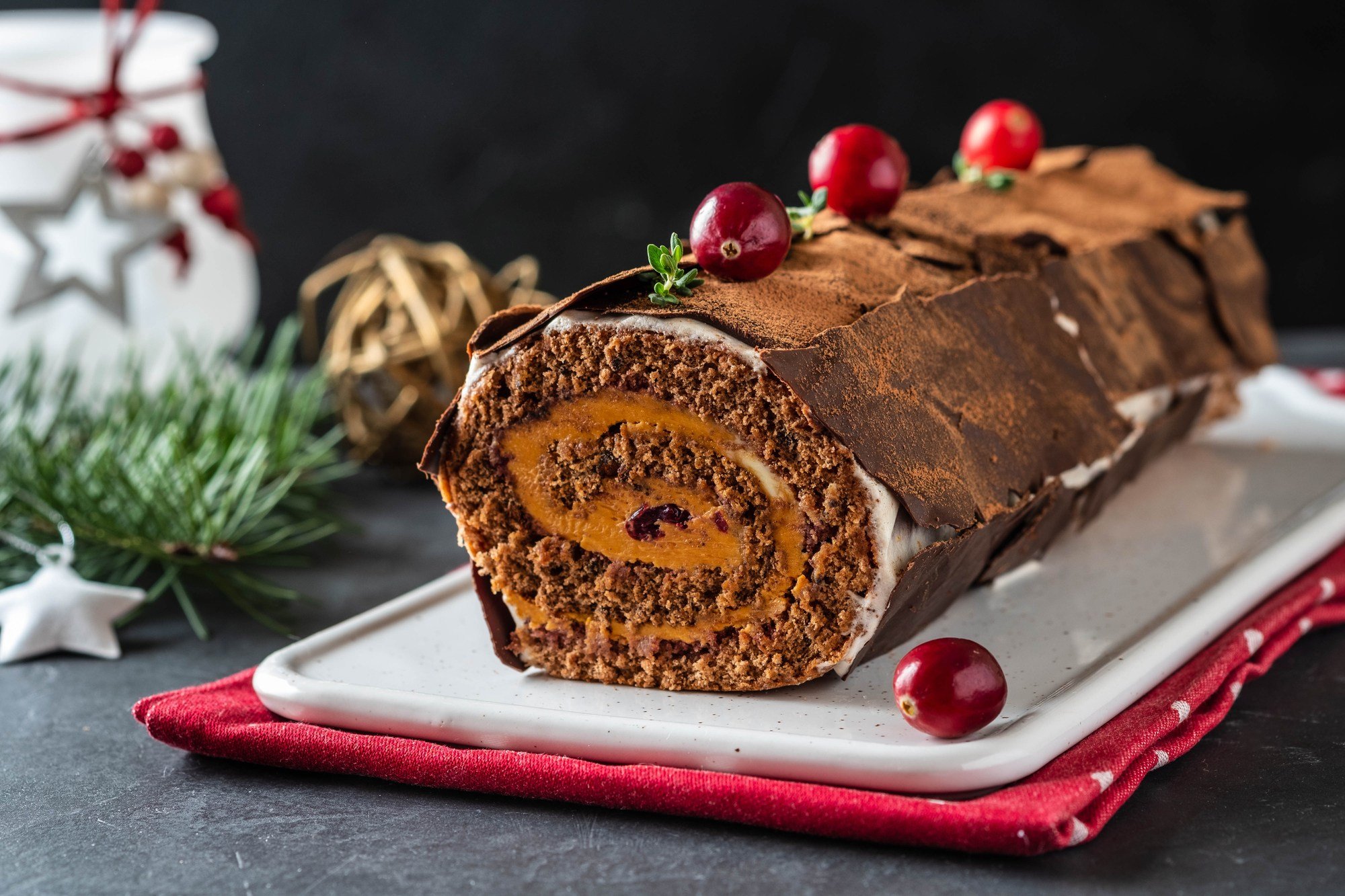
Are These Christmas Traditions in Europe Wacky?
These age-old traditions in Europe may sound unusual to North American readers, but they aren’t so dissimilar from our own holiday traditions.
Instead of a shoe, children put out a stocking to receive small gifts at Christmas. Whereas Icelanders have Gryla and the Yule Cat to keep kids on their best behavior, Elf on the Shelf tattles on naughty youngsters to good ol’ St. Nick. And Santa Claus sure does sound a lot like Sinterklaas, doesn’t it?
Maybe these Christmas traditions in Europe aren’t so wacky after all!
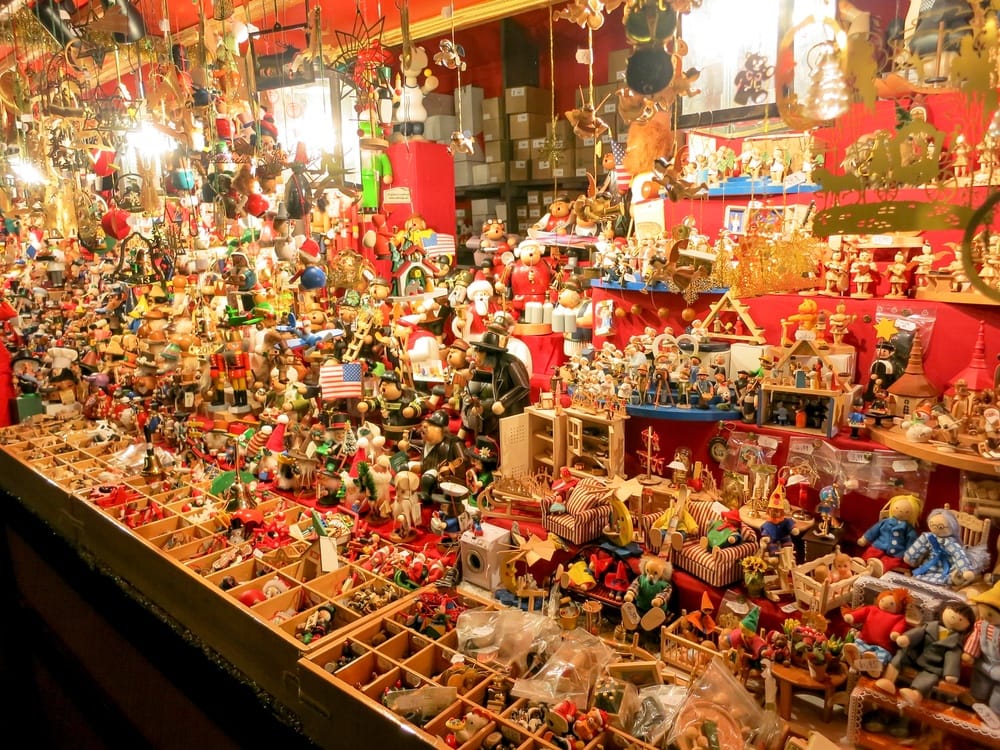
Learn About More Holiday Traditions
Learn about fun New Year’s Eve traditions from Europe.
Dreaming of a white Christmas? Discover the best white Christmas vacations for families.
Take a look at the origin and traditions of Kwanzaa.
Bring international flavors of Christmas home with Christmas Around the World: Recipes | Customs.
Teach kids about how other cultures celebrate holidays with Celebrations Around the World or the Winter Holidays Around the World coloring book.
Save this List of European Christmas Traditions
For future reference, keep these merry Christmas traditions from Europe. Simply pin the image below to Pinterest. We hope you’ll follow Travel Mamas on Pinterest while you’re at it!
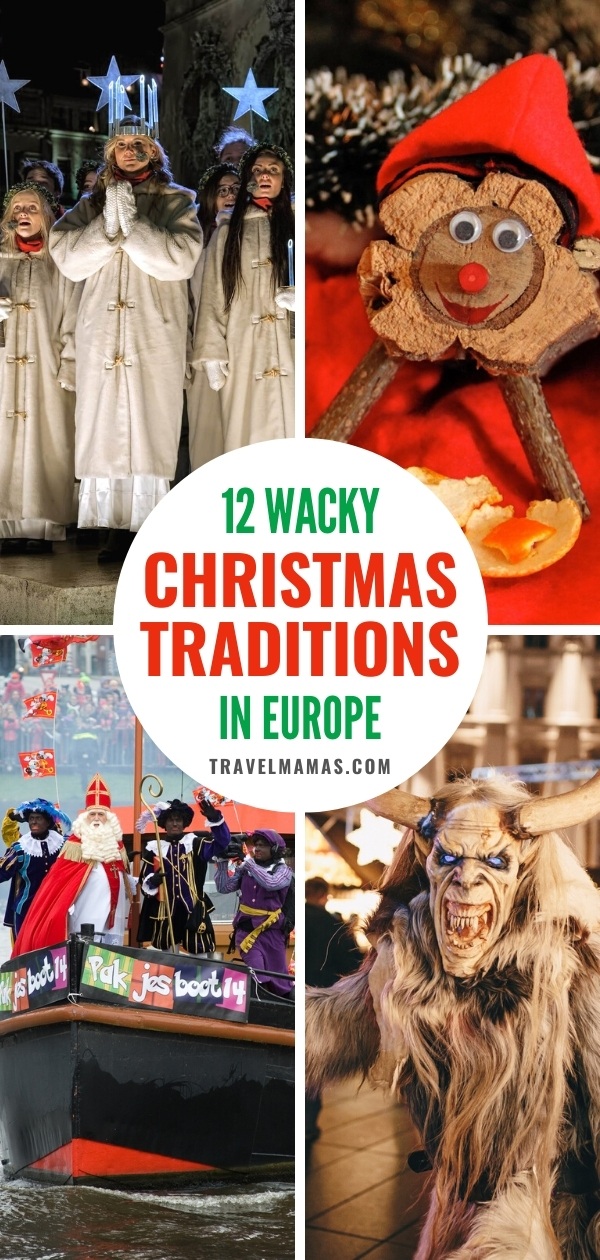
What do you think of these different Christmas traditions in Europe? What unusual holiday celebrations does your family enjoy? Let us know in the comments below!








In Spain we also have the tradición of Roscón de Reyes which is basically same as Portugal’s “Bolo de Rei”
Usually the bean pays for the whole cake, whereas the one who gets the figurine is crowned for the day. Some places have started to put real money inside some of the cakes, so you might be lucky and get a 50€ note!
Another big tradition across Spain is the magi parade: “Cabalgata de Reyes” there is one in every town so kids can see the magi and catch some of the sweets their helpers throw. The one in Madrid is so big it is even televised !!!
M – Muchas gracias! So interesting to learn about Spanish Christmas traditions!
I ordered a Buche de Noel this year….looking forward to trying it. On other “log” related topics….I wish I had known about that pooping log tradition when my son was little. That would have cracked him up!
Shannon – I hope your Bouche de Noel was delicious! I agree about the pooping log — little kids would love that one! 🙂
Oh the Spanish pooping christmas log! I had completely forgotten about him! These traditions are definitely different but also so wacky and fun! I can definitely get behind a table of 13 desserts.
Ha! Yes, I’m down for a table of 13 desserts anytime of year! 😛
Your post had me laughing out loud because traditions always seem so odd to others yet are cherished by those who celebrate them. Happy Holidays!
Happy holidays to you, Elizabeth!
I think it’s great that Sinterklauss is hanging out in Spain outside in the season. Some sangria and sunshine, my guy!
Yes! I’m up for sangria and sunshine at Christmas and all year, too!
These Christmas traditions all seem so fun! As a horror fan, Krampus seems especially awesome.
Krampus seems so scary to me but I’m a wimp and don’t like horror! 🙂
These are some really interesting and bit crazy Christmas traditions. I love reading about how other countries celebrate the holidays. It’s always so fun!
Right?! I love learning about other cultures’ holiday traditions, too!
This is so interesting. I love to read about the traditions of different countries. I never knew about the different Xmas traditions. Excellent article.
So glad you enjoyed learning about these European Christmas customs!
Many places for many customs and I often love to discover them and then steal them and make them mine!
Yes! I definitely would not mind stealing the Bûche de Noël from Provence! :-)-
OMG, Europe has some of the best Christmas traditions ever! They range from horrifying to hilarious to magical. This was such an amazing read. I mean, a pooping log?
Right?! The gift pooping log is so funny! Who knew?!
I absolutely love you bringing these traditions to us. Our weird tradition is eating lots of spice for new year’s to ward off all and any negativity 🙂
This is so interesting. I never knew that everything was so different when it came to celebrating the same holiday.
This is seriously some really neat information. I’m honestly googling more in depth stories about each one. Very interesting!